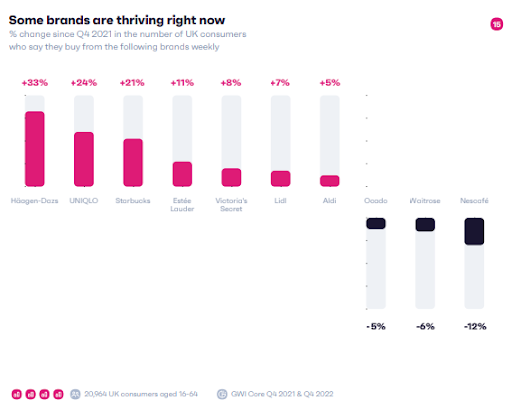Attitudes to the ‘bad vibes economy’ revealed | WARC | The Feed
The Feed
Read daily effectiveness insights and the latest marketing news, curated by WARC’s editors.
You didn’t return any results. Please clear your filters.

Attitudes to the ‘bad vibes economy’ revealed
New data from research firm GWI attempts to track the sentiment of consumers around the world in a time of inflation, with some surprising trends that marketers need to know.
Why it matters
Economic tumult is rarely straightforward, especially when it follows a pandemic unprecedented in living memory, and which took place in an ultra connected digital world. Across GWI’s global research of internet users aged 16+, the feeling around the world is generally one of “bad vibes”, with an overriding impression among consumers that they ought to be spending less.
However, some spending persists and it appears to be going toward treats and experiences that were impossible in the pandemic, from going out for a weekend coffee to going on holiday in the summer. What matters at a brand level, however, is quality rather than cost – given that price increases are now happening in most areas of the economy – and so certain premium brands are thriving.
Critically, there is also more attention paid to trust and brand reputation, so marketers should consider media that helps to build it.
The texture of the economy
Economies are not necessarily on fire: the job market is strong, inflation may be up but it’s also falling, and threats of recession have dissipated somewhat as other economies register growth. Effectively, this is a tumult of direct experience, as people around the world register changes in their day to day and concerns arising from that.
“The group saying inflation’s had a dramatic impact on their finances has grown in size (+26%) since March 2022; and only 28% expect inflation to decrease in their country in 2023,” the report states.
“On the back of this, the number describing their current approach to shopping as “spending less / much less money” has gone up by 27% in this timeframe.” Notably, European markets are feeling the heat far more than other markets around the world.
(In)conspicuous consumption
It appears that for those who keep spending, doing so modestly has come back into fashion.
For instance, the percentage of US respondents who want people to like or notice what they wear is down 9% since 2021, while those who see their vehicle as a status symbol has dipped 6% in the same time.
Frugality is in fashion, with the top five behaviour changes across 12 markets in Jan 2023:
- Cooking at home more: 44%
- Being more energy efficient (e.g. turning down heating): 43%
- Walking/cycling more: 36%
- Setting a personal budget: 34%
- Doing more activities that cost less: 34%
Brands adding value
Across 12 markets, these are the most important attributes when choosing brands:
- Quality: 53%
- Cost: 36%
- Trust in the brand: 32%
- Good reputation: 31%
- Positive customer reviews: 31%
- Special offers/discounts: 31%
The Starbucks and holidays effect
It’s interesting to consider where treats come into the conversation. According to GWI’s Core Plus research, while Europeans are increasingly turning to own-brand products, little treat experiences are “thriving”. From the report: “UK consumers might think twice about spending on Nescafé or Lavazza coffee beans, but spring for a Starbucks on a stressful afternoon.”
More broadly, across the world, for bigger purchases, experiences like concerts and holidays are markedly up, while home-based purchases (furniture, broadband, exercise equipment) and tech are markedly down.
Sourced from GWI.
[Image: GWI]
Email this content
